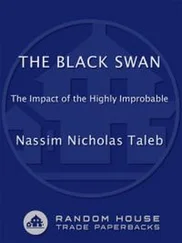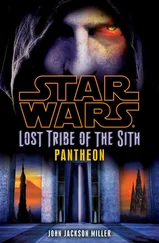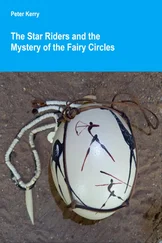The Run was a mixed-use ship, rated for both cargo and passengers—hence “modular” in its designation. Most of the vessel’s structure was taken up by a single gigantic compartment, shaped like a long, triangular prism, with engineering aft, the bridge fore, and the rest of the space allotted for cargo. Hollow boom arms protruded from the central “spine” at regular intervals, to which additional smaller modules could be attached. The ship could hold up to 144 of these, each customizable, to handle every kind of cargo the galaxy had to offer.
Hedda liked that the ship could haul just about anything. It meant you never knew what you were going to get, what weird challenges you might face from one job to the next. She had flown the ship once when half the cargo space in the primary compartment was reconfigured into a huge water tank, to carry a gigantic saberfish from the storm seas on Tibrin to the private aquarium of a countess on Abregado-rae. Hedda and her crew had gotten the beast there safely—not an easy gig. Even harder, though, was getting the creature back to Tibrin three cycles later, when the blasted thing got sick because the countess’s people had no idea how to take care of it. She gave the woman credit, though—she paid full freight to send the saberfish home. A lot of people, nobles especially, would have just let it die.
This particular trip, in comparison, was as simple as they came. The Legacy Run ’s cargo sections were about 80 percent filled with settlers heading to the Outer Rim from overpopulated Core and Colony worlds, seeking new lives, new opportunities, new skies. She could relate to that. Hedda Casset had been restless all her life. She had a feeling she’d die that way, too, looking out a viewport, hoping her eyes would land on something she’d never seen before.
Because this was a transport run, most of the ship’s modules were basic passenger configurations, with open seating that converted into beds that were, in theory, comfortable enough to sleep in. Sanitary facilities, storage, a few holoscreens, small galleys, and that was it. For settlers willing to pay for the increased comfort and convenience, some had droid-operated auto-canteens and private sleeping compartments, but not many. These people were frugal. If they’d had credits to begin with, they probably wouldn’t be heading to the Outer Rim to scrape out a future. The dark edge of the galaxy was a place of challenges both exciting and deadly. More deadly than exciting, in truth.
Even the road to get out here is tricky, Hedda thought, her gaze drawn by the swirl of hyperspace outside the large porthole she happened to be passing. She snapped her eyes away, knowing she could end up standing there for twenty minutes if she let herself get sucked in. You couldn’t trust hyperspace. It was useful, sure, it got you from here to there, it was the key to the expansion of the Republic out from the Core, but no one really understood it. If your navidroid miscalculated the coordinates, even a little, you could end up off the marked route, the main road through whatever hyperspace actually was, and then you’d be on a dark path leading to who knew where. It happened even in the well-traveled hyperlanes near the galactic center, and out here, where the prospectors had barely mapped out any routes…well, you had to watch yourself.
She put her concerns out of her mind and continued on her way. The truth was, the Legacy Run was currently speeding along the best-traveled, best-known route to the Outer Rim worlds. Ships moved through this hyperlane constantly, in both directions. Nothing to worry about.
But then, more than nine thousand souls aboard this ship were depending on Captain Hedda Casset to get them safely to their destination. She worried. It was her job.
Hedda exited the corridor and entered the central hull, emerging in a large, circular space, an open spot necessitated by the ship’s structure that had been repurposed as a sort of unofficial common area. A group of children kicked a ball around as adults stood and chatted nearby; all just enjoying a little break from the cramped confines of the modules where they spent most of their time. The space wasn’t fancy, just a bare junction spot where several short corridors met—but it was clean. The ship employed—at its captain’s insistence—an automated maintenance crew that kept its interiors neat and sanitary. One of the custodial droids was spidering its way along a wall at that very moment, performing one of the endless tasks required on a ship the size of the Run.
She took a moment to take stock of this group—twenty people or so, all ages, from a number of worlds. Humans, of course, but also a few four-armed, fur-covered Ardennians, a family of Givin with their distinctive triangular eyes, and even a Lannik with its pinched face, topknot, and huge, pointed ears protruding from the side of its head—you didn’t see many of those around. But no matter their planet of origin, they were all just ordinary beings, biding time until their new lives could begin.
One of the kids looked up.
“Captain Casset!” the boy said, a human, olive-skinned with red hair. She knew him.
“Hello, Serj,” Hedda said. “What’s the good word? Everything all right here?”
The other children stopped their game and clustered around her.
“Could use some new holos,” Serj said. “We’ve watched everything in the system.”
“All we got is all we got,” Hedda replied. “And stop trying to slice into the archive to see the age-restricted titles. You think I don’t know? This is my ship. I know everything that happens on the Legacy Run. ”
She leaned forward.
“Everything.”
Serj blushed and looked toward his friends, who had also, suddenly, found very interesting things to look at on the absolutely uninteresting floor, ceiling, and walls of the chamber.
“Don’t worry about it,” she said, straightening. “I get it. This is a pretty boring ride. You won’t believe me, but in not too long, when your parents have you plowing fields or building fences or fighting off rancors, you’ll be dreaming of the time you spent on this ship. Just relax and enjoy.”
Serj rolled his eyes and returned to whatever improvised ball game he and the other kids had devised.
Hedda grinned and moved through the room, nodding and chatting as she went. People. Probably some good, some bad, but for the next few days, her people. She loved these runs. No matter what eventually happened in the lives of these folks, they were heading to the Rim to make their dreams come true. She was part of that, and it made her feel good.
Chancellor Soh’s Republic wasn’t perfect—no government was or ever could be—but it was a system that gave people room to dream. No, even better. It encouraged dreams, big and small. The Republic had its flaws, but really, things could be a hell of a lot worse.
Hedda’s rounds took over an hour—she made her way through the passenger compartments, but also checked on a shipment of supercooled liquid Tibanna to make sure the volatile stuff was properly locked down (it was), inspected the engines (all good), investigated the status of repairs to the ship’s environmental recirculation systems (in progress and proceeding nicely), and made sure fuel reserves were still more than adequate for the rest of the journey with a comfortable margin besides (they were).
The Legacy Run was exactly as she wanted it to be. A tiny, well-maintained world in the wilderness, a warm bubble of safety holding back the void. She couldn’t vouch for what was waiting for these settlers once they dispersed into the Outer Rim, but she would make sure they got there safe and sound to find out.
Hedda returned to the bridge, where Lieutenant Bowman all but leapt to his feet the moment he saw her enter.
Читать дальше












